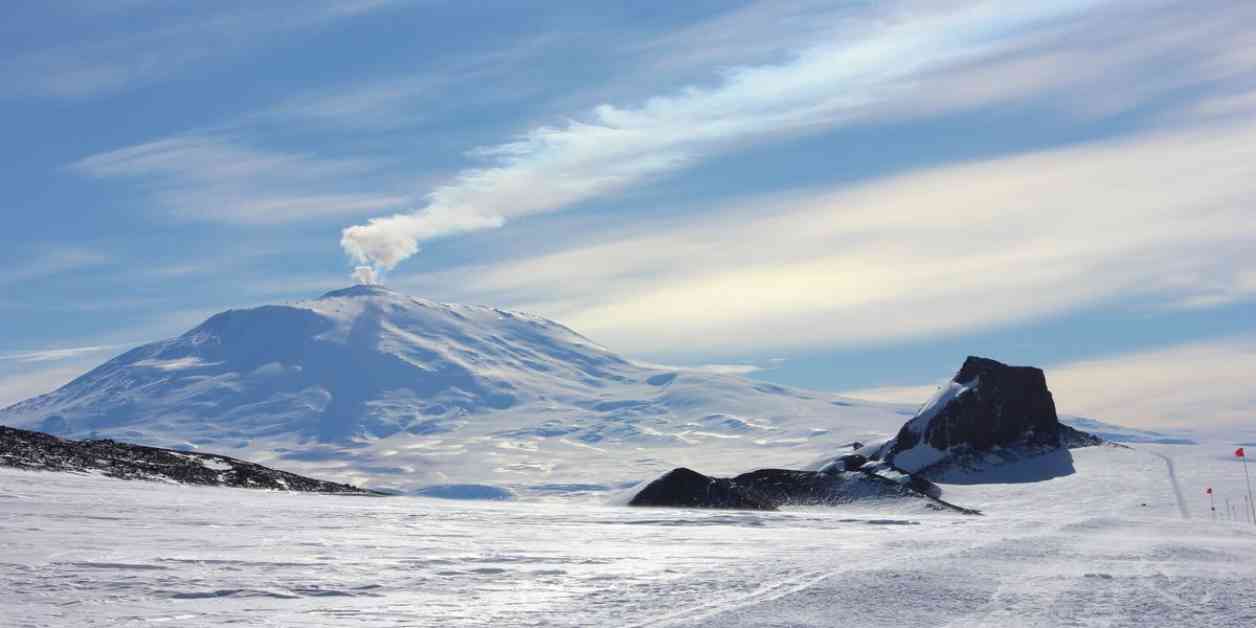Antarctica’s Mount Erebus Erupting Gold Dust Daily
Mount Erebus, the world’s southernmost active volcano located in Antarctica, has been making headlines recently for its unique eruption of gold dust. Discovered in 1841 by Captain Sir James Clark Ross, who named it after his boat, Mount Erebus stands at an impressive 12,448 feet (3,794 meters) tall. Despite taking more than 130 years to become active, the volcano has been erupting since 1972, emitting not lava but a significant amount of gas and steam.
The Golden Eruption
What sets Mount Erebus apart from other volcanoes is its ability to produce gold dust during its eruptions. The volcano spews out approximately 80 grams of gold dust daily, which amounts to £5,040 worth of gold at the current market price of £63 per gram. As the lava from Mount Erebus reaches the colder air, the gold particles crystallize for a few hours before being carried by the wind, sometimes traveling over 600 miles away from the volcano itself.
Postdoctoral research scientist Conor Bacon from Columbia University’s Lamont-Doherty Earth Observatory explained the unique feature of Mount Erebus, stating, “One of its most interesting features is the persistent lava lake that occupies one of [its] summit craters, where molten material is present at the surface.” This rare occurrence is made possible by specific conditions that prevent the surface from freezing over, allowing for the crystallization of gold dust to take place.
The Science Behind the Phenomenon
Not all volcanoes have the ability to produce gold dust like Mount Erebus does. The key factor lies in the speed at which gases are released during eruptions. Mount Erebus releases its gases slowly enough to allow for the gold dust to crystallize, while other volcanoes with more violent gas releases do not provide the necessary conditions for this process to occur.
The gold dust produced by Mount Erebus is composed of very small particles measuring 20 micrometers (0.02mm) each. These particles are carried by the volcanic gases and steam, creating a unique spectacle as they crystallize in the cold Antarctic air. The slow and steady eruption of Mount Erebus allows for the formation of these precious gold crystals, making it a rare and valuable natural phenomenon.
Implications and Discoveries
The discovery of gold dust being emitted by Mount Erebus has sparked interest among scientists and researchers studying the volcano. The presence of gold in volcanic eruptions opens up new possibilities for understanding the geological processes at work beneath the Earth’s surface. Additionally, the economic potential of extracting gold from volcanic emissions could have significant implications for the mining industry in the future.
The crystallization of gold dust by Mount Erebus provides a fascinating glimpse into the intricate processes that occur within the Earth’s crust. By studying the formation of gold crystals during volcanic eruptions, scientists can gain insights into the distribution of precious metals and the conditions required for their deposition. This knowledge could lead to advancements in mineral exploration and extraction techniques, benefiting both scientific research and industrial applications.
In conclusion, Mount Erebus’s eruption of gold dust serves as a reminder of the natural wonders that can be found in the most remote and inhospitable corners of the world. The unique geological features of this Antarctic volcano continue to captivate researchers and enthusiasts alike, shedding light on the complex interactions between Earth’s internal forces and external environments. As Mount Erebus continues to spew out its daily dose of gold, it remains a symbol of the beauty and mystery that lie beneath the icy surface of Antarctica.













